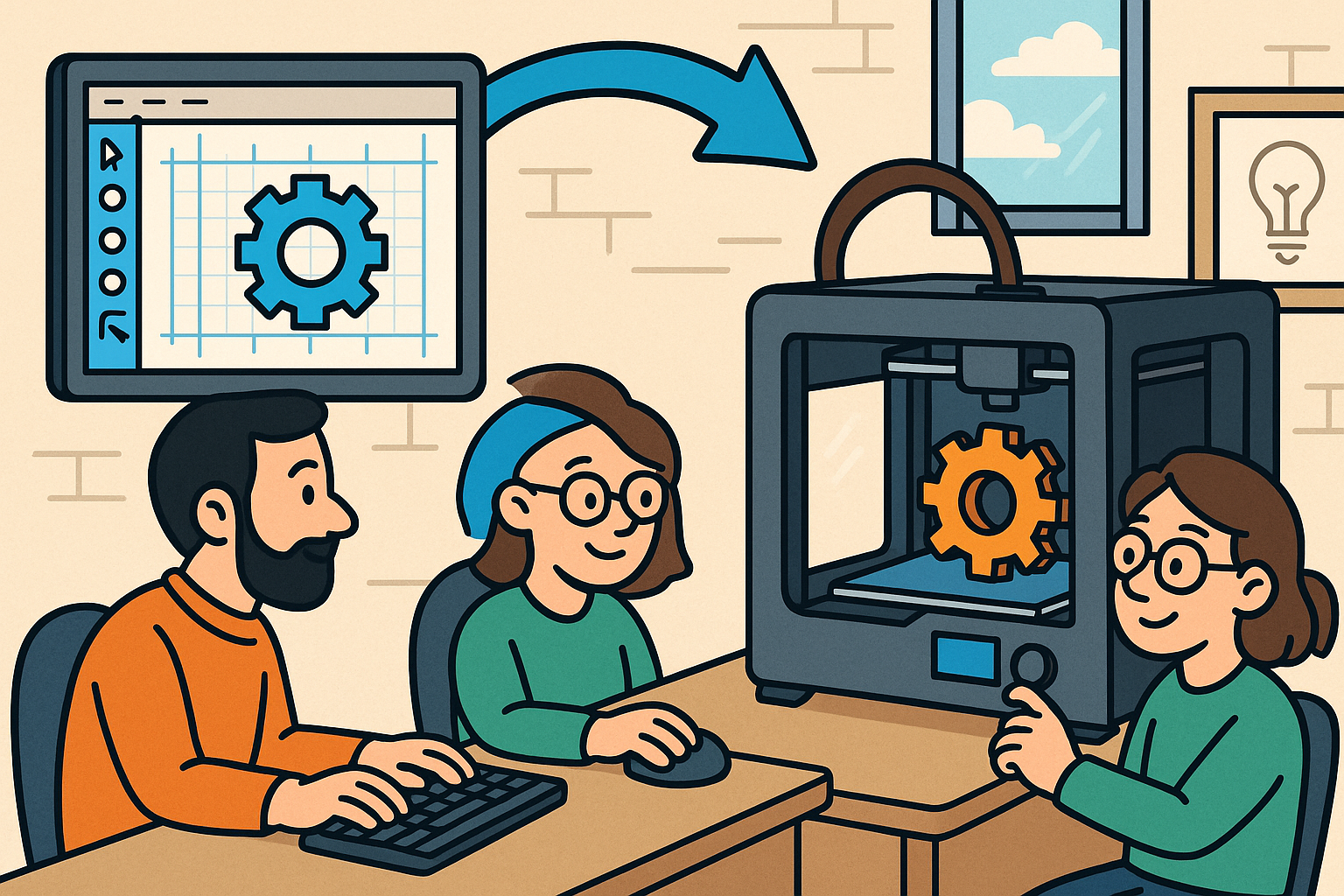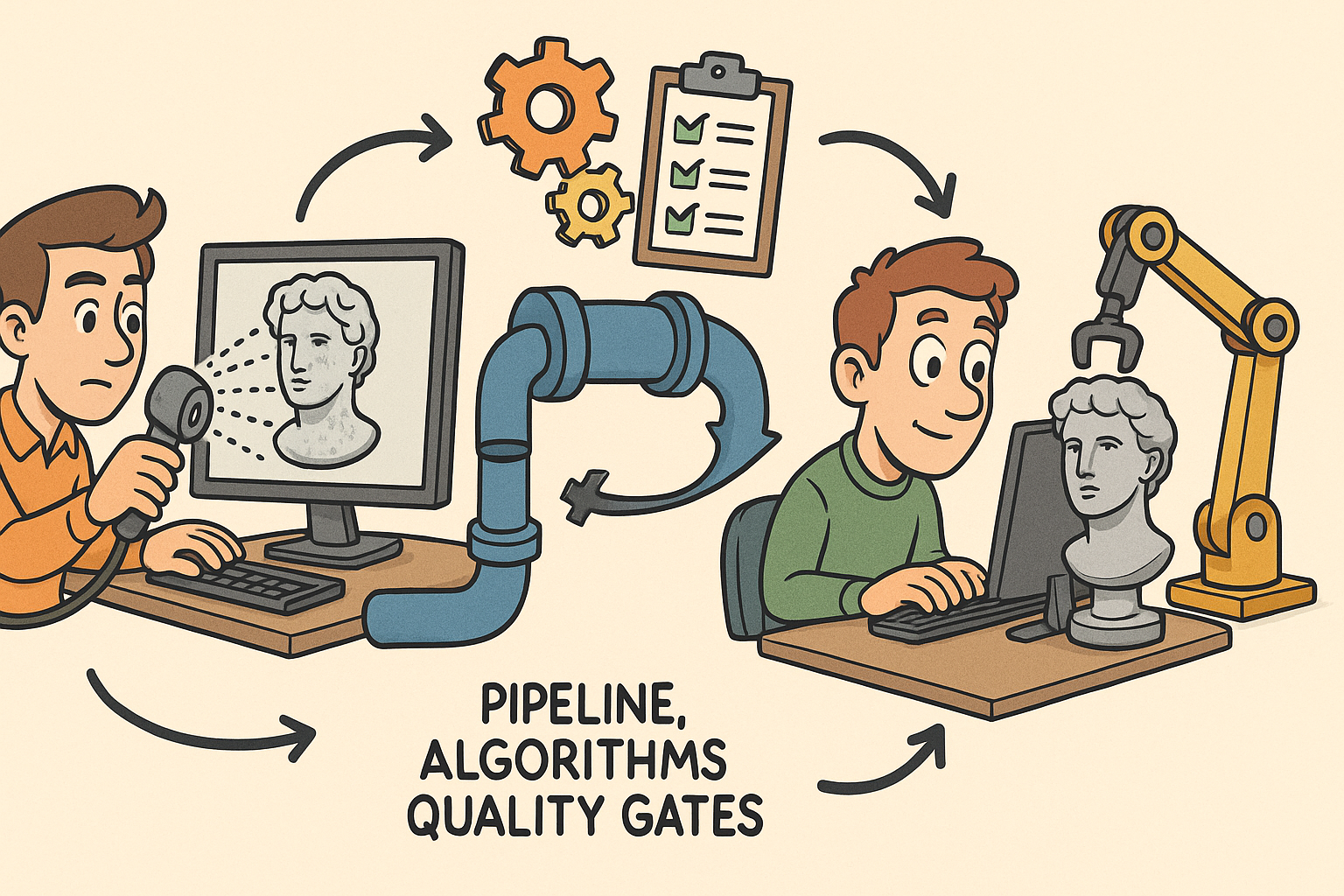Your Cart is Empty
Customer Testimonials
-
"Great customer service. The folks at Novedge were super helpful in navigating a somewhat complicated order including software upgrades and serial numbers in various stages of inactivity. They were friendly and helpful throughout the process.."
Ruben Ruckmark
"Quick & very helpful. We have been using Novedge for years and are very happy with their quick service when we need to make a purchase and excellent support resolving any issues."
Will Woodson
"Scott is the best. He reminds me about subscriptions dates, guides me in the correct direction for updates. He always responds promptly to me. He is literally the reason I continue to work with Novedge and will do so in the future."
Edward Mchugh
"Calvin Lok is “the man”. After my purchase of Sketchup 2021, he called me and provided step-by-step instructions to ease me through difficulties I was having with the setup of my new software."
Mike Borzage
Integrating 3D Printing: Revolutionizing Traditional Design Software Workflows
August 12, 2025 7 min read


Introduction and Background: A New Era in Design Software
Traditional design software has long served as the backbone of conventional product development, enabling engineers and architects to create precise models and detailed prototypes. Historically, software like CAD (Computer-Aided Design) systems provided the necessary tools to draft, simulate, and plan intricate designs, ensuring each dimension and specification conformed to industry standards. Over the years, designers have relied on these systems for their proven track record, robustness, and reliability. However, with the exponential growth in design complexity and customer demand for unique, customized products, the industry has encountered limitations tied to static processes that struggle to accommodate rapid changes or intricate requirements. In parallel, the increasing adoption of **3D printing workflows** has heralded a seismic shift in the way manufacturing and prototyping are approached. These workflows facilitate a level of speed, complexity, and customization that traditional methods could scarcely dream of achieving.
Traditional Design Software and Its Impact
Traditional design software is engineered to sustain the rigorous demands of product development. It provides the structural framework to create precise geometries, simulate load-bearing performance, and ensure that designs adhere to regulatory and safety standards. The established methods enable a linear workflow where designers progress from ideation to finalized blueprints in a sequential and predictable manner. However, this approach often struggles when confronted with evolving market demands, where the need for rapid prototyping and immediate feedback is becoming paramount. Moreover, a significant challenge arises when modifications in early design stages require extensive rework throughout the entire process. Over time, the limitations have prompted industry experts to seek hybrid solutions that integrate advanced production techniques like additive manufacturing into these conventional environments, driving a genuine transformation in design methodologies.
The Shift to 3D Printing Workflows
The evolution toward 3D printing has been fueled by the promise of enhanced flexibility and speed. In modern product development, designers frequently leverage 3D printing not only to produce finish-ready prototypes but also to push the boundaries of possibility in design. The ability to fabricate complex structures in a single manufacturing cycle means that iterative testing, performance evaluation, and redesign can occur in rapid succession. As a result, this integration enables real-time feedback loops, shortening the time from conception to market. **Customization** has emerged as a key driver for this integration, where the fusion of traditional design software with 3D printing methods allows for the production of intricate, personalized components without incurring the high costs generally associated with small-batch production. The resulting synergy is an innovation pathway that bridges the gap between digital design and tangible product, reflecting a broader revolution in the manufacturing domain.
Strategies for Seamless Integration Between Digital Design and Additive Manufacturing
Efficient integration of 3D printing workflows into traditional design software requires overcoming a set of technical and procedural challenges. One major hurdle is the **merging of digital design environments** with the complex workflows required for additive manufacturing. The challenges include maintaining the fidelity of design data when transferred across platforms, ensuring compatibility between file formats, and preserving the integrity of intricate design details that are critical for successful 3D printing. These challenges necessitate deliberate strategies that encompass both software and process adjustments. Developers are increasingly focused on creating architectures that support plugin-based extensions, enabling CAD systems to bridge the gap with 3D printing operations seamlessly. This often includes the development and implementation of standardized protocols for file format translations and the incorporation of simulation tools that predict print outcomes before physical production. Furthermore, an iterative design approach that supports rapid prototyping, real-time feedback, and adjustments marks a significant departure from traditional, linear product development processes.
Overcoming Digital and Physical Workflow Challenges
The integration process often begins by addressing the incompatibility issues between digital design outputs and the input requirements of 3D printing hardware. Designers must often convert models from one file format to another, a process that can sometimes lead to data loss or misinterpretation of intricate geometries. Key strategies for improving this translation process include the development of robust conversion algorithms and the adoption of universal file standards that ensure minimal loss of design fidelity. Bulleted below are some of the core technical strategies:
- Development of multi-format conversion tools to minimize data loss.
- Implementation of quality checks during file translation to verify geometry integrity.
- Use of standardized protocols for metadata preservation across platforms.
Bridging Traditional CAD with Additive Manufacturing
Bridging the gap between conventional CAD systems and 3D printing operations often requires integrating plugins that serve as the connective tissue between these environments. These software components are designed to act as translators and mediators, converting static designs into dynamic, printable commands. Additionally, innovative software architectures allow for the synchronous exchange of data between design and production stages, enhancing the overall workflow. Such integrations are not merely technical add-ons, but they signify a paradigm shift towards more holistic product development. Essential to this paradigm is the calibration of workflow adjustments that facilitate a seamless exchange of design iterations, enabling manufacturers to rapidly iterate and refine prototypes based on real-time feedback. The result is an elevated level of creativity and efficiency that pushes the boundaries of conventional manufacturing practices while still preserving the precision and reliability associated with traditional design methods.
Best Practices and Technical Considerations for Integrated Design and 3D Printing Workflows
Implementing integrated workflows between traditional design software and 3D printing techniques necessitates a strong emphasis on quality control, technical rigor, and collaborative processes. Quality control mechanisms, including sophisticated simulation tools, are critical to ensure that printed products meet stringent performance standards. These simulations are designed to predict potential print outcomes, thereby allowing designers to identify and troubleshoot issues before committing to production. In addition to simulation, meticulous attention to iterative design and rapid prototyping is essential. By establishing a real-time feedback loop, design teams can seamlessly adjust digital models in response to prototypes produced through additive manufacturing, thus accelerating product refinement. Attention to **security** and version control is equally important, particularly as collaborative projects expand across multiple teams and geographic boundaries. This requires robust software solutions that ensure every modification is properly tracked and that intellectual property remains secure against unauthorized access.
Emphasizing Simulation and Quality Control
Simulation tools offer a predictive insight into how a designed component will behave under various conditions during and after printing. These tools often allow designers to visualize stress distributions, potential deformations, and material behavior, all within a virtual environment. By simulating the printing process and the subsequent physical performance of a component, engineers can preemptively make critical adjustments before investing resources in physical prototypes. Additionally, these simulation tools play a vital role in reducing waste and ensuring that every iteration conforms to predefined quality standards. Designers typically employ a series of automated checks that include thermal simulations, load-bearing analyses, and material compatibility assessments to optimize each design. Moreover, these predictive controls are increasingly integrated into CAD systems to provide immediate feedback as designs are modified, promoting a more dynamic and iterative workflow that minimizes errors and reduces production turnaround times.
Integrating Iterative Design and Collaborative Security Measures
In the modern era of product design, effective collaboration among multidisciplinary teams has become indispensable. Integrated workflows that combine design software with 3D printing production not only enable rapid prototyping but also facilitate continuous refinement through real-time feedback loops. These feedback loops allow designers to quickly identify design flaws, experiment with various iterations, and finalize components at an accelerated pace. Beyond the technical considerations, security and version control remain major pillars in these processes. Design files often contain proprietary information that must be safeguarded against unauthorized access or modifications. To address these concerns, many organizations rely on secure cloud-based solutions, which offer robust encryption protocols and detailed version histories. Alongside strict version control, access can be tightly regulated based on user roles, ensuring that sensitive stages of the design process remain safeguarded. Bulleted considerations for these integrated best practices include:
- Utilizing digital twins to simulate real-world performance before printing.
- Implementing real-time monitoring systems to oversee iterative design phases.
- Enforcing advanced security measures and version control protocols for collaboration.
- Integrating collaborative tools that support simultaneous editing and secure data sharing.
Conclusion: The Future of Integrated Design and Additive Manufacturing
The integration of 3D printing workflows into traditional design software marks a transformative milestone in the evolution of product development. By embracing these hybrid systems, designers and manufacturers can not only accelerate the prototyping process but also achieve an unprecedented level of accuracy and detail. The fusion of time-honored design principles with cutting-edge additive manufacturing enables an environment where iterative improvements, real-time feedback, and advanced simulations come together to push creativity, efficiency, and innovation to new heights. With the **enhanced prototyping speed** and potential for extensive customization, companies are now better poised to meet the bespoke needs of a rapidly evolving market. As these technologies mature and converge, the boundaries between digital design and physical production will continue to blur, ultimately ushering in a new era of agile and adaptive product development.
Summarizing Integration Benefits
One cannot overlook the significant benefits that arise from integrating these advanced workflows. As the industry continues to evolve, the seamless integration of digital design and additive manufacturing is increasingly recognized for its potential to revolutionize the entire product lifecycle. The ability to quickly iterate on designs, incorporate real-time testing results, and ensure secure and collaborative design processes makes a compelling case for businesses to adapt. In effect, this hybrid strategy fosters an environment where errors are minimized, inventive breakthroughs are maximized, and the overall time to market is significantly reduced. Such advantages are increasingly vital in an era where innovation and adaptability determine an organization's competitive edge. Key elements include the preservation of intricate geometric details, structural integrity, and the enhanced capacity for rapid customization—all of which play critical roles in driving operational efficiency and market responsiveness.
Outlook on Future Technological Advancements
Looking ahead, the potential for further innovation in the integration of 3D printing with traditional design software appears vast. Emerging technologies, such as artificial intelligence and machine learning, offer promising avenues for optimizing different stages of both design and manufacturing processes. For instance, AI-driven design assistants are beginning to assist engineers by automatically refining CAD models based on data-driven insights, thereby reducing human error and enhancing design precision. Similarly, machine learning algorithms can analyze real-time production data to predict and prevent potential failures in the printing process, ensuring that final products adhere to the highest quality standards. In addition, advances in cloud computing and distributed collaboration tools are streamlining the way teams work together across borders, making it easier than ever for organizations to share resources and expertise. As these innovations continue to unfold, the convergence of digital design and physical manufacturing will likely lead to smarter, more adaptive, and inherently secure workflows that not only respond to market demands but also anticipate them. This forward-thinking approach underscores the necessity for industry professionals to remain agile and proactive, ready to adopt the next wave of technological advancements in order to maintain a competitive edge in a rapidly changing landscape.
Also in Design News

From Raw Scans to Manufacture-Ready Geometry: Pipeline, Algorithms, and Quality Gates
December 08, 2025 13 min read
Read More
Design Software History: Numerical Robustness in Geometry Kernels: History, Failure Modes, and Engineering Playbook
December 08, 2025 13 min read
Read More
Cinema 4D Tip: Reusable Cinema 4D Camera Rig Presets for Faster Shot Setup
December 08, 2025 2 min read
Read MoreSubscribe
Sign up to get the latest on sales, new releases and more …


